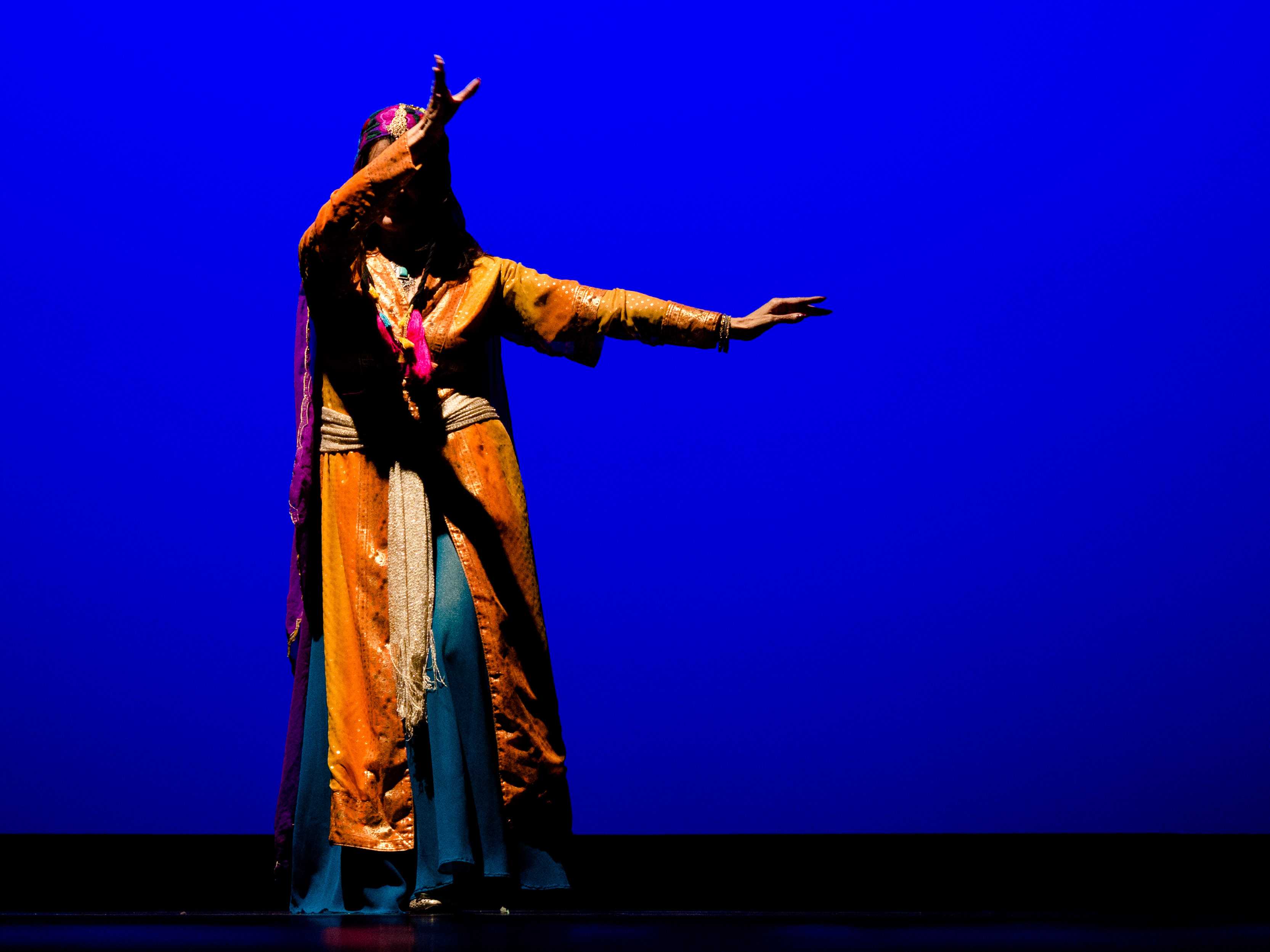From Tehran to De Anza: A Dancer’s odyssey
April 18, 2016
The audience fell silent as the dancer stepped into the light. Dressed in a traditional Persian costume, she stood tall and graceful in a frozen tableau, extending her arms out from her sides, tilting her palms and long fingers upwards. She waited for the music to begin.
For Mansoureh Sabetzadeh, music major, dancing in front of an audience is an opportunity that isn’t taken for granted. The Islamic law in Iran, her home country, has forbidden it. But on this evening, of the Winter Dance concert at De Anza, she will perform a dance from Azerbaijan, a province in northern Iran.
The journey that has led to this dance has taken a lifetime and spanned over 7,000 miles, from her childhood home in Iran to the stage at the performing arts auditorium at De Anza. As a child, before the Iranian revolution of the late 1970s, Sabetzadeh traveled all over Iran with her father, who was a water engineer and built wells and irrigation systems in remote parts of the country.
“My father developed water sources in desert villages in eastern Iran, in Khorasan,” Sabetzadeh said.
The Iranian province of Khorasan and the county of Torbat-e Jam are significant centers of culture in Iran. This is also a region of the country that only gets about five inches of rain per year. As a young girl, Sabetzadeh would be present at large celebrations when a new water system was completed.
“When water was discovered in the desert, there would be celebrations with music and regional dances,” she said. “I learned a lot about ethnic dances and music when water was discovered.”
Sabetzadeh remembers that before the revolution, the Iranian government supported dance and music, both indigenous folkloric traditions and western styles, including pop and jazz. She studied ballet as a child and taught dance as a teenager.
The Iranian Revolution of 1979 changed everything. Islamic law banned dance and music. Nineteen years old at that time, Sabetzadeh was forced to take her passion for these art forms underground. For 1o years after the revolution, those who wanted to learn dance and music had to do so in secret, under constant threat of being discovered by the government.
To learn the traditional songs of her culture, Sabetzadeh would hide in a closet and sing to herself, so the neighbors couldn’t hear her. She taught herself nearly a thousand pieces of music from many different traditions.
After about ten years, the restrictions started to loosen. Traditional dance began to be tolerated– if performed by men . Women were allowed to play only traditional instruments. Forbidden to dance, she learned to play a dulcimer-like instrument called the santour.
For the next 27 years, Sabetzadeh studied the santour and eventually became a professional musician, recording numerous CDs of traditional Persian music.
Even though it was strictly prohibited, her passion for traditional music and dance pushed Sabetzadeh to find ways to advance her studies on the subject. She integrated music and dance into her academic research and authored the first Iranian Dance Encyclopedia while earning a doctorate in Persian language and literature.
But, because Islamic law still prevented women from dancing, she would have to leave Iran to perform her art. This is why two years ago, Sabetzadeh came to the United States.
Sabetzadeh is committed to keep dance traditions of her country alive through her own practice.
“It is my duty to study, perform and teach these music and dance traditions,” Sabetzadeh declared. “It is too hard to learn this from a library. You have to perform it.”
Since being in the United States, Sabetzadeh has been invited to lecture at both Berkeley and UCLA. Her plan is to continue her research on dance traditions, as well as to teach and perform the dance and music of Iran.
At last month’s dance recital, Sabetzadeh stood alone on the stage. Her expressive countenance was one of calm confidence. The Mona Lisa-like smile was all that gave away the truth: This was the moment that has been more than three decades and thousands of miles in the making. After a moment, a syncopated Persian rhythm started, and she began to dance.

